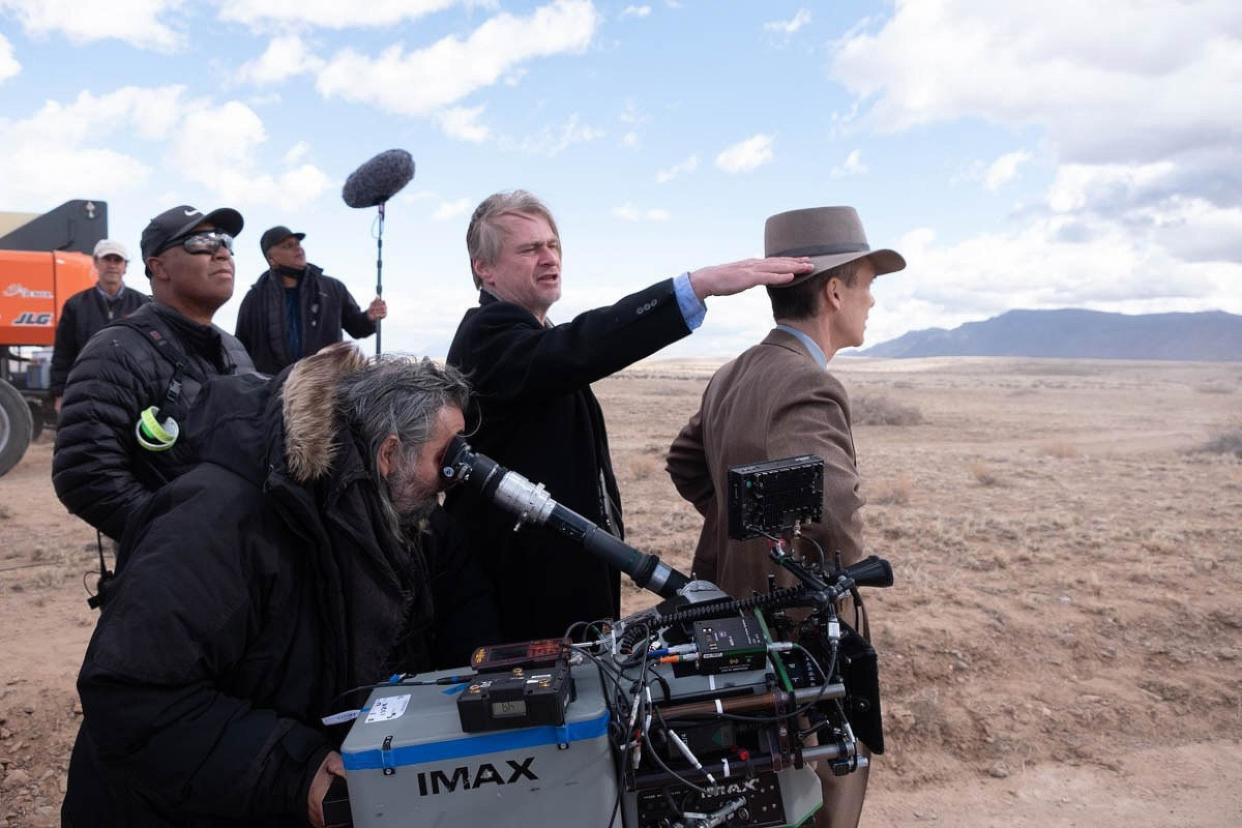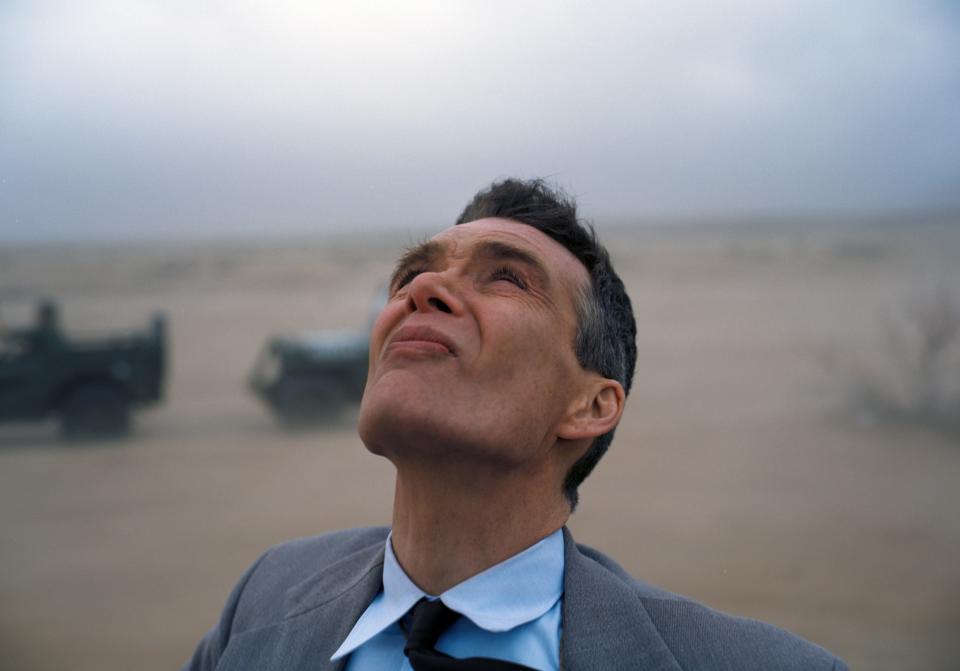‘Oppenheimer’ Is the Oscar Frontrunner — Here’s Why

- Oops!Something went wrong.Please try again later.
- Oops!Something went wrong.Please try again later.
- Oops!Something went wrong.Please try again later.
Yes, Christopher Nolan wants you to buy the Blu-ray of “Oppenheimer.”
But the event at the Academy’s Linwood G. Dunn Theatre Monday night promoting the November 21 home video launch of the $951 million global hit — which no one in Hollywood predicted — also screened “The Story of Our Time: The Making of Oppenheimer,” a Blu-ray special feature, and added a stellar crafts panel for the press, guild, and Academy voters on hand.
More from IndieWire
Greta Gerwig, Lily Gladstone, Todd Haynes, 'The Curse' Creators to Be Celebrated at IndieWire Honors
Universal knows that craft nominations could add up for “Oppenheimer,” as they have for other Nolan movies like “Dunkirk” and “Inception,” and that these craft maestros would showcase their expertise and star power. At the reception afterwards, Nolan told IndieWire that he was surprised at how strong the making-of movie was, because he actively avoided having the crew on the set, finding them an unwelcome distraction.
The message of the behind-the-scenes documentary couldn’t be clearer: Nolan wanted everything to be done in front of the cameras, avoiding digital VFX as much as possible. This forced Oscar-winning special effects supervisor Scott Fisher and VFX supervisor Andrew Jackson (“Tenet”) to collaborate as problem-solvers, using physics and engineering and sheer creativity to develop not only the ricocheting atoms that Robert Oppenheimer (Cillian Murphy) sees in his mind, but the billowing Trinity atomic bomb blast itself. In other words: They blew shit up.
Also facing a high bar were 73 speaking parts (cast with recognizable actors) and 18 aging roles, because as Nolan told me, “I didn’t want any composite characters.” The makeup and hair departments, led by supervising hair stylist Jaime Leigh McIntosh and supervising makeup artist Luisa Abel, had to pass muster with the massive, unforgiving IMAX cameras, which led Abel to bring out her IMAX magnifying glasses. Oppenheimer and his wife Kitty (Emily Blunt) age decades during the movie, but on the day that Oppenheimer’s old gang of scientists assembles to celebrate him, they all had to be aged in one day, requiring the training of 18 hair and makeup artists.

The movie was also demanding for Emmy-winner Ellen Mirojnick, the costume designer who had to dress all the people meandering around Los Alamos. On the day that Oppenheimer gives a post-Hiroshima speech as they stamp their feet, at the last minute Nolan asked that the extras wear bright colors. That had not been the planned color palette. Mirojnick made it happen. That’s a much-repeated mantra on a Nolan set.
Painter-turned-production designer Ruth De Jong — a mentee of Jack Fisk, who brought her on her first movie job with “There Will Be Blood” — had to figure out how to build the town of Los Alamos near the real location in New Mexico, by then overrun with tourist shops. That took time. But she also had to assemble an Oval Office within a week of finding out that the original location was unavailable. And Gary Oldman was locked on one certain day to play Harry Truman (another makeup feat). There was no wiggle room. “Build it,” said Nolan. Luckily, they had on hold the “Veep” Oval Office, which they could retrieve from storage and whip into shape. On the day of the shoot, the set smelled of paint. “That was just a curve ball,” said De Jong on a panel after the movie, “but it worked out.”
When Oscar-winning Swedish composer Ludwig Göransson (“Black Panther”) found out that Nolan wanted to lean into violins, he turned to his wife, American violinist Serena McKinney, who helped him to devise the piece that Nolan instantly called “Oppie’s Theme.”
For Oscar-winning sound supervisor Richard King (“Dunkirk,” “Inception”), catching the sounds during shooting is a crucial building block for what comes later. “If Chris had his preferences, he would only use production sound on his films,” he said. “And so it’s a part of my job to make all the sound design sound like production sound, and sound like it was recorded on the day. That has a visceral, recognizable, intangible quality of realness that you don’t achieve if you’re making sounds up from scratch or with a synthesizer.”
At the reception, VFX supervisor Andrew Jackson said watching the movie made him realize how much Nolan created boxes that his crew had to work within, and that it made their work even better. “You think about doing it practically right from the very beginning,” said Fisher. “So you never let the door creep open to, ‘Hey, we’re gonna throw this to visual effects.’ It does happen sometimes. But you’re always trying to do it as much as you can.”
“You know that there is always some solution that’s gonna work,” said Jackson, who is currently working on “Furiosa.” “It’s a case of finding what that is.”
Best of IndieWire
2023 Emmy Predictions: Who Will Win at the Primetime Emmy Awards?
2023 Emmy Predictions: Outstanding Documentary or Nonfiction Special
2023 Emmy Predictions: Outstanding Documentary or Nonfiction Series
Sign up for Indiewire's Newsletter. For the latest news, follow us on Facebook, Twitter, and Instagram.

